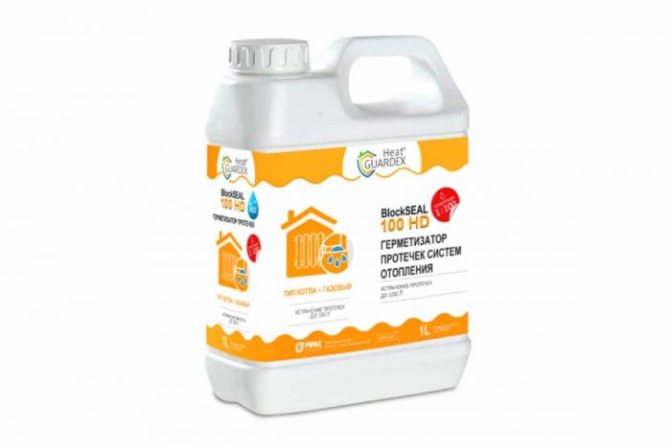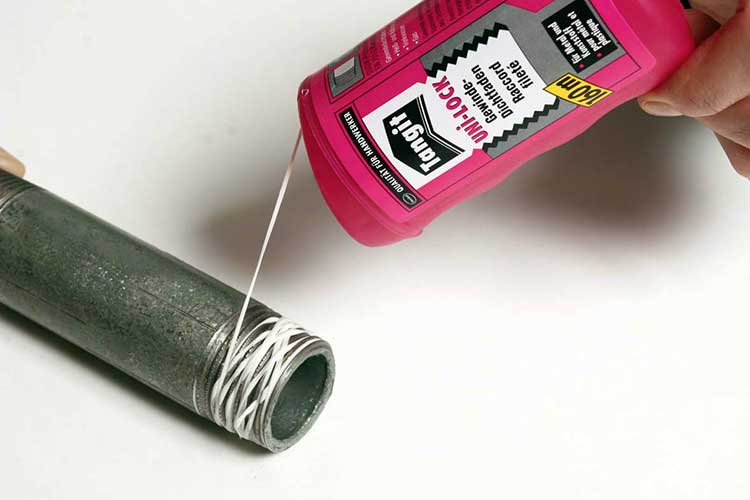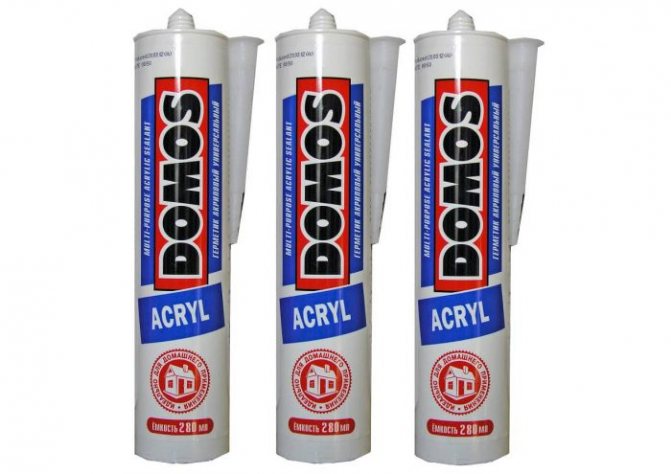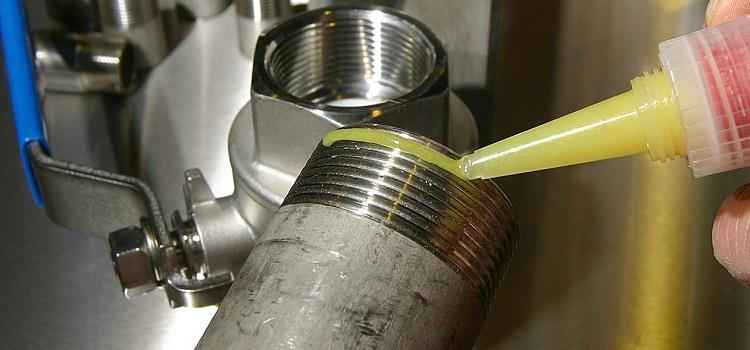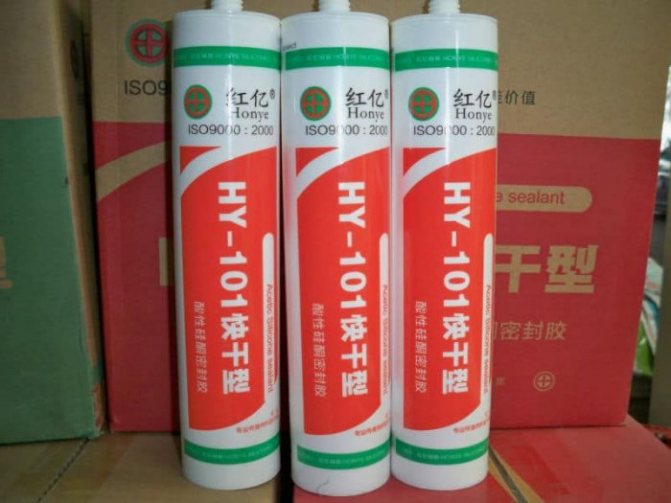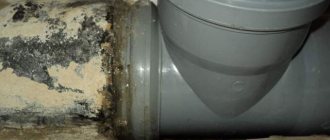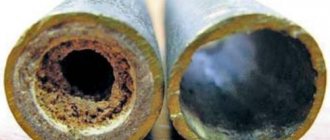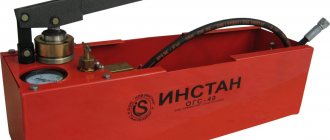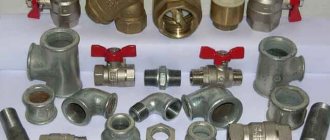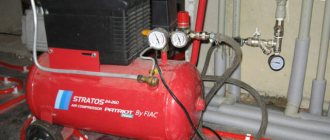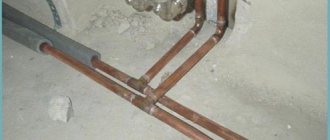Types of sealants for pipes, threaded connections
For sealing small holes and cracks in the heating system the following sealants are used:
- Oligomer based
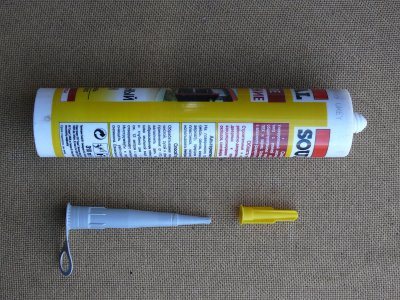
Easy to operate and cost a little. They are widely used in construction (installation of windows, installation of wall coverings, and so on).
There are many subtypes - polyurethane, polysulfide and others. Not all oligomeric substances are effective for sealing joints in heating systems, so read the instructions before buying.
- Acrylic
Cheap, adhere well to various porous surfaces (wood, concrete, brick, plaster and so on). Easily abraded with sandpaper and other abrasive surfaces. It is allowed to paint and cover with a primer. The main disadvantages are poor water resistance, dependence on ambient temperature, average mechanical strength after drying, and so on.
therefore this composition covers the surfaces located inside the house. It is allowed to cover heating pipes with this connection if the temperature inside the system is not very high.
- Thiokol
Resistant to mechanical damage after hardening. They do not come into contact with gasoline, paints, solvents and other chemically active substances. They tolerate precipitation well. Optimum temperature range for use - from -50 to +80 degrees... Due to its high inertness, it is allowed to coat surfaces and pipes that will come into contact with chemically active substances.
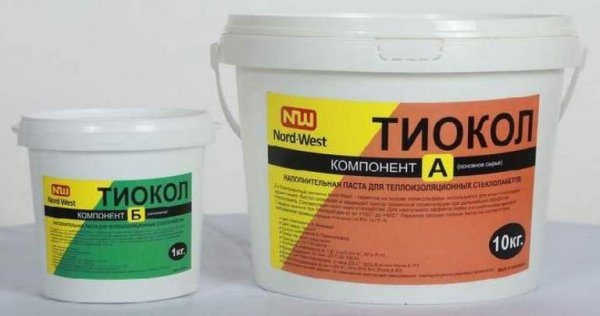

Photo 1. Two cans (1 and 10 kg) of thiokol sealant from the manufacturer Nord-West. A similar substance is used for heating systems.
- Silicone
The most common type. They differ from others in their low price and relatively high quality. Withstand temperature extremes within from -30 to +60 degrees, well tolerate contact with water and mechanical deformation, as well as contact with chemically active substances.
After hardening, it makes no sense to paint in a different color, since paint will peel off the hardened surface (therefore, a dye is added to this compound). There are a large number of subtypes of silicone sealants, which are added with various additives to improve the properties of the formulation. For example, natural or synthetic fungicides are added to this substance to destroy the fungus.
Advantages and disadvantages
A high-quality thread sealant has a lot of advantages, so its popularity is very high.
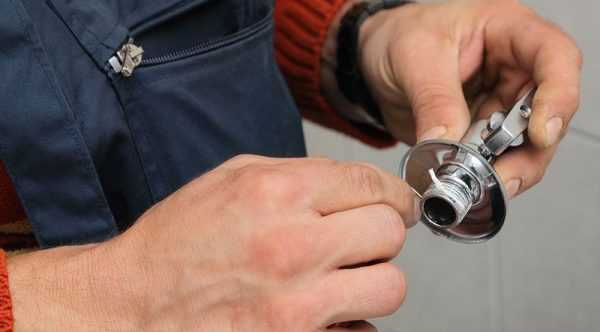

The advantages of such formulations:
- ease of use - you can work with the clamp even without skills, the process will take less than a minute,
- high polymerization speed - it will be possible to use the unit in a few hours,
- cost-effectiveness - the consumption of sealant for fixing the thread is minimal,
- efficiency - the connection will be 100% tight even when the pressure in the system rises,
- additional protection of products from rust - this is important for metal parts,
- long service life - many products last 5 years or more (in extreme conditions - up to a year),
- the ability to use in gaps of any thickness - from fractions of a millimeter or more,
- resistance to mechanical stress and vibration, to the action of chemicals, insolubility in water,
- suitability for a variety of materials, the ability to connect products of dissimilar structure.
A good sealant has few downsides.In fact, they appear only when it is necessary to dismantle the unit, which will require heating with a construction hair dryer or other professional tools. In addition, FUM tape can cost less than anaerobic sealant, but its quality is significantly higher than all known analogues.
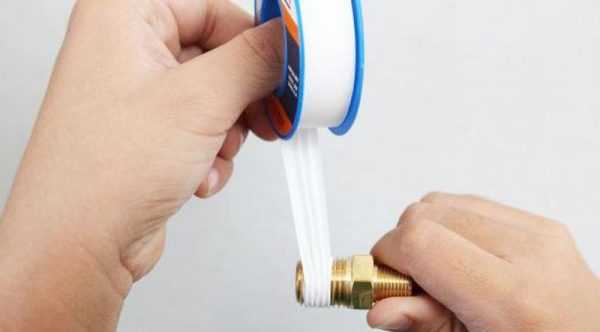

Liquid sealant for sealing leaks in pipes, use with antifreeze
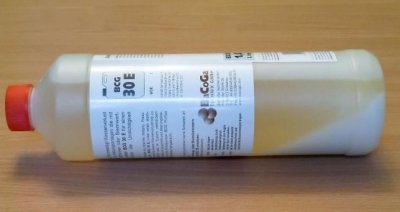

Liquid sealant in the heating system - self-solidifying solution, which is used for sealing seams and small holes in pipes.
The substance is a thick liquid that is poured into pipes; on contact with air, it solidifies, which leads to sealing and elimination of leaks in the pipes.
Liquid mixtures in heating systems are used in the following cases:
- When it is impossible to find the place of the leak.
- The leak is detected, but it is not possible to eliminate it with soldering or a clamp.
- When installing pipes in closed insulated systems when there is no external access to the pipes.
- When the use of other methods is difficult due to the danger of violating the integrity of the walls and floors.
Due to their properties, liquid mixtures are used in everyday life not only for repairing pipes and heating systems. And also the compositions are used for sealing gaps and cracks in walls, plumbing systems, car engines and so on... Liquid formulations tolerate mechanical deformation well, and their properties do not depend on the ambient temperature (with the exception of acrylics).
Chemical inertness and thermal stability allows the use of sealants in heating systems, where water is used as a heat carrier.
If antifreeze circulates in the heating system, then it is recommended to buy a sealant that matches the temperature properties of antifreeze... It is a good idea to buy a thiocol formulation as it can withstand high temperature extremes. During the sealing of pipes, antifreeze is removed from the heating system, since most of even the most flexible hermetic substances acquire heat resistance after complete solidification.
Attention! Liquid mixtures seal cracks well, but using them against large holes is pointless.
Anaerobic sealant
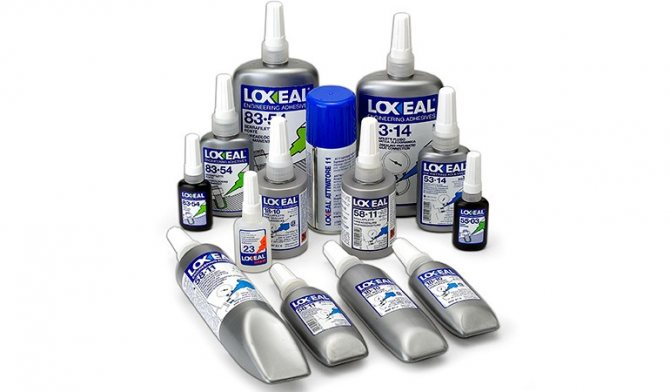

Anaerobic sealant is certainly suitable for winding the sealing of all plastic threaded connections, for brass, for cast iron, manufactured in a factory way, but there is one peculiarity on steel parts.
When a thread is made in a steel part, different kinds of lubricants are used that get on the thread. When glue is applied, it, once on a greasy place, lingers on it. This can be overlooked. After the clutch begins to wrap, a channel may form, through which the liquid will then come out.
It is not always possible on site to remove grease from the thread surface. Therefore, it is not recommended to use glue-sealant as a sealant for steel threads and parts, since there is flax and thread.
When using sealant, pay attention to the type of sealant you get. Some grades require heating when disassembling the connection. Imagine a metal connection with a metal sleeve, after which the plastic pipe begins. To disassemble it, you must first heat it up (obviously more than 100 degrees). For the metal part, this does not matter at all, but the plastic pipe may be damaged afterwards. Therefore, see what kind of threaded connections you are sealing with a sealant!
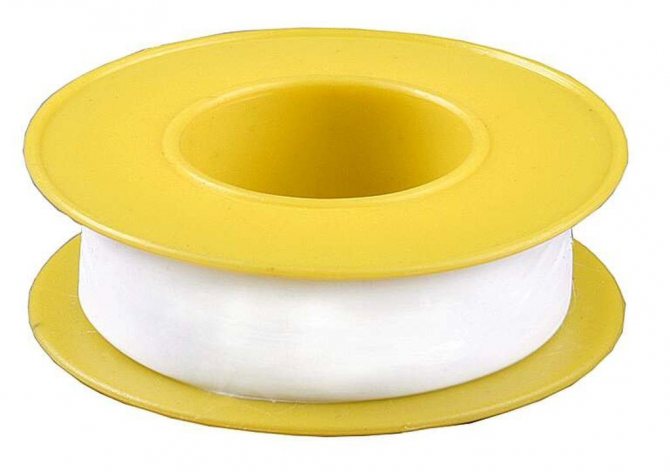

fum tape is not credible as a pipe sealant. But the tape can be used in a summer cottage, in a vegetable garden, since there is nothing wrong with something leaking.
What to rely on when choosing
To eliminate leaks in the heating pipe, almost any sealant (acrylic, silicone, and so on) is used.
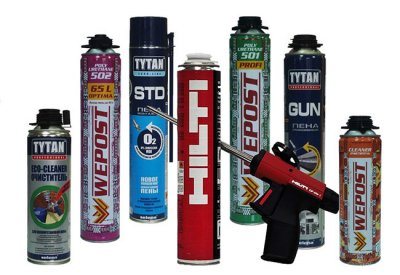

When choosing the optimal substance, pay attention to the price, temperature regime, resistance to water and mechanical deformation.
And also remember some subtleties:
- If the heating unit is not in the house, then it is advisable not to use acrylic sealant, since it does not tolerate water and mechanical damage (for example: if water gets into a crack during prolonged rain, this will lead to cracking of the substance).
- It is also not recommended to use acrylic sealant when a powerful heating boiler is installed, as the agent may crack at very high temperatures. Better to give preference to heat-resistant silicone and thiokol mixtures.
- For sealing threaded connections, it is recommended to use silicone and thiokol sealants, because after hardening, they do not deform and do not clog the threads.
Reference. In everyday life, for most tasks, it is recommended to use silicone sealantas it has good performance and low price.
Flax sanitary
It is a pure natural product made from thin, homogeneous, long-staple, combed flax obtained from the flax stem. Linen strands are used to seal threaded connections in pipelines for various purposes. A sealing paste (lubricant) is applied on top of the flax. Sanitary flax does not lose its insulating properties when the humidity changes, has a natural bactericidal effect, which prevents decay processes, withstands temperatures up to 160 ° C. It is sold in pigtails weighing 50 grams and 200 grams.
The choice of high-temperature sealant for the boiler and heating system of a private house
If the heating boiler is not in the house, but on the street in a separate extension, then the temperature regime of the pipes connecting the boiler and home radiators is taken into account. This moment is especially critical for the northern regions, where the temperature drops in winter. below -30 degrees... In such cases, it is recommended to give preference to thiokol types. In addition, silicone mixtures are suitable, which contain additives that improve thermal properties.
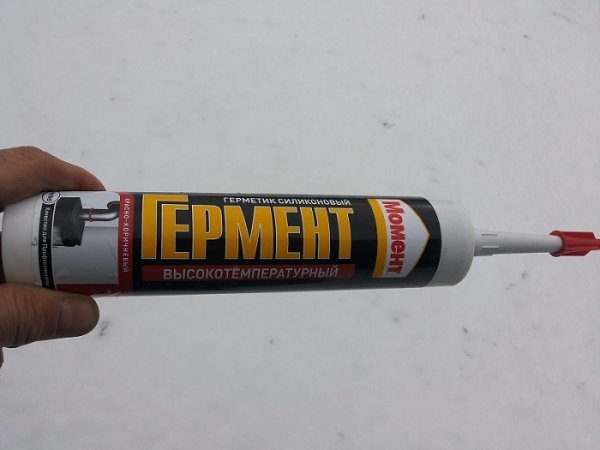

Photo 2. High-temperature silicone sealant Moment used for heating boilers. Substance is red-brown in color.
If a crack appears in the boiler, then seal the equipment using high temperature composition. To accomplish this task, use thiokol and silicone mixtures.
And also suitable for this purpose anaerobic heat-resistant sealant. Anaerobic mixtures have a slightly different mode of action, so they more easily tolerate high temperatures and quickly solidify. The main disadvantage is the rather high cost, but the use of anaerobic sealant is fully justified in emergency cases.
Preparatory work before refueling batteries and pipes
First, choose the best sealant for your system. Before buying, pay attention to the consumption of the active ingredient. For every 60 liters of water the coolant in the pipes is required about 1 liter of sealant, however, these figures may differ depending on the type of sealant. To determine the volume of the coolant, multiply the cross-sectional area by the total length of the pipe. And also add to this indicator the volume of the radiators and the boiler (this information is indicated in the passport for the installation).
Important! You can count by direct measurement - for this, all the water from the pipes is drained and the volume is measured using containers of a known size. This method is more time consuming but more reliable.
Fill setup process
Follow the process of setting up the system for pouring:
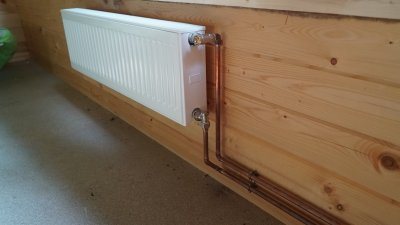

- Remove air from the heating system, since premature solidification will lead to the formation of unwanted clots in the system.
- If the system has filtersthen dismantle themso as not to damage the system.
- Open all heating system tapsto allow the sealant to penetrate each work area.
- Install an automatic pump on the first radiator... Turn it on 1-2 hours to warm up the pipe and vented out the remaining air (the optimal pressure level is 1 bar).
Pouring procedure
After that, start filling:
- Prepare a large container for solution preparation.
- Pour the required amount of water into it.
- Add sealant and stir the solution.
- Immediately introduce the solution into the heating system using a pumpto minimize contact of the sealant with air.
- Start the heating system in normal mode (optimal water temperature - not less than 50 degrees).
- You need to drive a sealant with a coolant for at least 4 days, but on day 5 it is recommended to carry out control measures to check whether the sealing is effective or not.

